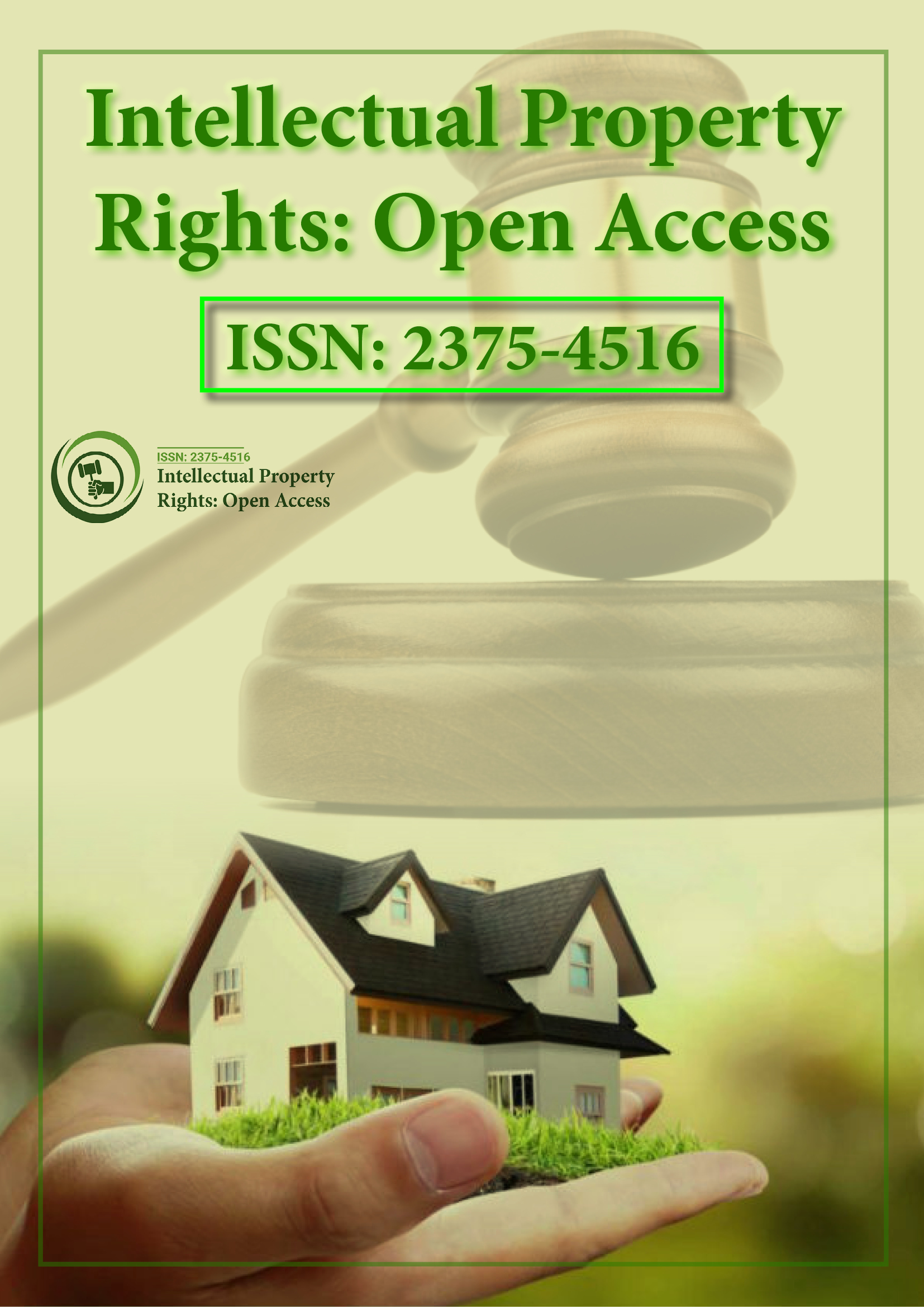Indexed In
- Open J Gate
- RefSeek
- Hamdard University
- EBSCO A-Z
- OCLC- WorldCat
- SWB online catalog
- Publons
Useful Links
Share This Page
Journal Flyer

Open Access Journals
- Agri and Aquaculture
- Biochemistry
- Bioinformatics & Systems Biology
- Business & Management
- Chemistry
- Clinical Sciences
- Engineering
- Food & Nutrition
- General Science
- Genetics & Molecular Biology
- Immunology & Microbiology
- Medical Sciences
- Neuroscience & Psychology
- Nursing & Health Care
- Pharmaceutical Sciences
Commentary Article - (2023) Volume 11, Issue 1
Analysis of Novel Dataset on Patent Examiners and Patent Results
Byrant Dang*Received: 03-Mar-2023, Manuscript No. IPR-23-20579 ; Editor assigned: 06-Mar-2023, Pre QC No. IPR-23-20579 (PQ); Reviewed: 22-Mar-2023, QC No. IPR-23-20579 ; Revised: 29-Mar-2023, Manuscript No. IPR-23-20579 (R); Published: 05-Apr-2023, DOI: 10.35248/2375-4516.23.11.224
Description
Ideas and inventions are crucially protected by Intellectual Property Rights (IPRs) against unlawful usage by third parties. IPRs can encourage inventive activity at the micro level by giving inventors a way to recoup their investment in creating innovative work. Transparent intellectual property rules encourage global trade and Foreign Direct Investments (FDI) overall.
The People's Republic of China (PRC) introduced a system of Intellectual Property (IP) laws that complies with international standards as outlined in the Agreement on Trade-Related Aspects of Intellectual Property Rights (TRIPS) agreement in light of this and as a result of its strong efforts to promote innovation and international trade after the declaration of the Open Door Policy in the late 1970s.
By granting and upholding patent rights in China, the State Intellectual Property Office (SIPO), established in 1985, plays a crucial part in the country's IP system. After the Japanese Patent Office (JPO) and the United States of America Patent and Trademark Office (USPTO), it has now risen to become the third-largest patent office in the world (in terms of patent applications filed per year, see World Intellectual Property Organization, 2009). Over 250,000 patent applications were filed in total in 2009. More applications than ever before are now submitted to the USA Patent and Trademark Office ("PTO"). How are those applications handled. Each patent solicitor has a unique background and set of experiences.
Nevertheless, until recently, all that was available was this kind of "anecdata," as it was illegal for anyone to ever learn what happened to patent applications that eventually did not issue as patents. It is well-known that the USA Patent and Trademark Office is ineffective and inefficient. Hence, suggestions for changing the patent office have concentrated on raising the standard of patent review while lowering its expense. Yet, this viewpoint ignores the important role played by the high costs involved in getting a patent, which act as a reliable filter against low-value patents. Furthermore, the expensive screen is likely to reject disproportionate numbers of socially detrimental patents due to asymmetries in patent prices. The patent office is the most well- known venue for this expensive viewing, but it is not the only one. The private costs of navigating an administrative process may support the process in a variety of other situations.
The idea that inventors should be treated equally regardless of their nationality is one of the tenets incorporated in all international patent treaties. Whether this "national treatment" notion is upheld in reality is a subject of little research. Using a matched sample of 47,947 patent applications, we examine whether the results of patent examination at the European and Japanese patent offices differ consistently by inventor nationality and technology area. They discover that domestic inventors are more likely than foreign inventors to be granted a patent, and that the beneficial domestic inventor effect is stronger in the home economy's technologically specialized sectors. They gather and analyze a novel dataset on patent examiners and patent results, building on the knowledge gathered by speaking with managers and examiners at the USA Patent and Trademark Office (USPTO). Based on 182 patents whose validity was decided by the Court of Appeals for the Federal Circuit (CAFC) between 1997 and 2000, this dataset was created. We identify the lead examiner for each patent at the USPTO and compile historical data from all of their patent examinations. These data are used to investigate a number of theories on the relationship between the strength of resulting patent rights and the patent examination process, a greater chance that the CAFC will rule against validity.
Citation: Dang B (2023) Analysis of Novel Dataset on Patent Examiners and Patent Results. Intel Prop Rights. 11:224.
Copyright: © 2023 Dang B. This is an open access article distributed under the terms of the Creative Commons Attribution License, which permits unrestricted use, distribution, and reproduction in any medium, provided the original author and source are credited.
